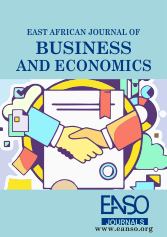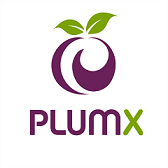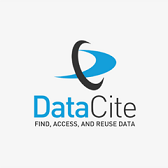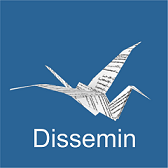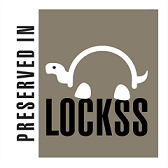The Moderating Role of the Organizational Climate on the Relationship between IT alignment and Employee Performance
Abstract
Purpose: The purpose of this study was to empirically establish the moderating role of the organisational climate on the relationship between IT alignment and employee performance at Umeme Limited. Design/methodology/approach: The research used a cross-sectional approach. To test their theories, the authors use hierarchical regression modeling. A sample of 165 respondents with a 100% response rate was selected from among the 290 employees of Umeme Limited using proportionate simple random and sampling procedures. Findings: Multiple regression results indicate that Information technology alignment is a significant predictor of Employee Performance in UMEME ltd (Beta = .534, p < 0.001). This implies that Information technology alignment explains 53.4% of the variance in Employee performance. When testing for moderating role of the organisational climate on the relationship between IT alignment and employee performance at Umeme Limited, the interaction term was positive and significant, resulting in the hypothesis “organisational climate moderates the association between IT alignment and employee performance at Umeme Limited” being accepted. Practical implications: The organisational climate in which Umeme employees operate is dynamic and rapidly changing, requiring constant modification of strategies and operations to reflect these changing circumstances if employee performance is to be increased. Originality/value: This is one of the few studies that focus on testing the moderating effects of organisational climate on the relationship between IT alignment and employee performance in the Service Sector in Uganda
Downloads
References
Alyahya, M. & Suhaimi, M.A. (2013). A conceptual model for business and information technology strategic alignment from the perspective of small and medium enterprises. International Journal of Business, Humanities and Technology, 3(7), 83-90.
Auditor General’s Annual Reports (2017; 2018)
Bergeron, F., Raymond, L. & Rivard, S. (2001). Fit in Strategic Information Technology Management Research: An empirical comparison of perspectives. Omega, 29(2), 125–142.
Burke, & Litwin. (2007). The Complete Guide to Mergers & Acquisitions. San Francisco, CA: John Wiley & Sons, Inc.
Cameron, K., & Quinn, R. (2011). Diagnosing and changing organisational culture: Based on the competing values framework (3rd ed.). San Francisco, CA: Jossey-Bass.
Chan, Y.E. & Reich, B.H. (2007). IT alignment: what have we learned? Journal of Information Technology, 22(4), 297–315.
Cooper, R., & Schindler S. (2003). Business Research Methods. The McGraw-Hill/Irwin series operations and decision sciences. 8th Edition. McGraw-Hill School Education Group
De Toni, A. & Tonchia, S., 2011, Performance Measurement Systems: Models, Characteristics and Measures. International Journal of Operations & Production Management, 21, (1), 46-70
Denison, D., R. & Mishra, A., K. (1995).Toward a theory of organisational culture and effectiveness. Organization Science, 6(2), 204-223.
Denison, D., R., Janovics, J., Young, J. & Cho, H., J. (2007). Diagnosing organisational cultures: Validating a model and method. Working Paper, International Institute for Management Development, Lausanne, Switzerland.
Extracts of findings of Internal Auditors Annual 2017
Fonstad, N. O. (2006). Engaging Matters: Enhancing Alignment with Governance Mechanisms. CISR Research Briefing, Sloan School of Management, Massachusetts Institute of Technology (MIT), December 2006.
Gerow, J. E., Thatcher, J. B., & Grover, V. (2015). Six types of IT-information technology alignment: An investigation of the constructs and their measurement. European Journal of Information Systems. https://doi.org/10.1057/ejis.2014.6
Harold, F., H. O., Schmidt, S. S., & Yaisawarng, S. (1999). Incorporating the operating environment into a nonparametric measure of technical efficiency. Journal of Productivity Analysis, 12(3), 249-267.
Hofstede, G., & Hofstede, G. J. (2010). Cultures and Organisations. 3rd Edition. New York, NY: McGraw-Hill USA.
Internal Auditors Annual report (2017)
Jorfi, S., Md Nor, K., & Najjar, L. (2011). The Relationships between IT Flexibility, IT-Information technology alignment, and IT Capability. International Journal of Managing Information Technology.
Kashanchi, R., & Toland, J. (2006). Can ITIL contribute to IT/business alignment? An initial investigation. Wirtschaftsinformatik. https://doi.org/10.1007/s11576-006-0079-x
Kearns, G. S. & Sabherwal, R. (2007). Strategic Alignment between Business and Information Technology: A knowledge-based view of behaviors, outcome, and consequences. Journal of Management Information Systems, 23(3), 129–162.
Krejcie, R. V., & Morgan, D. W. (1970). Determining sample size for research activities. Educational and Psychological Measurement, 30(3), 607–610.
Kwantes, C., T. & Boglarsky, C., A. (2007).Perceptions of organisational culture, leadership effectiveness and personal effectiveness across six countries. Journal of International Management, 13(2), 204-230.
Li, W., Liu, K., Belitski, M., Ghobadian, A., & O’Regan, N. (2016). E-Leadership through strategic alignment: An empirical study of small- and medium-sized enterprises in the digital age. Journal of Information Technology. https://doi.org/10.1057/jit.2016.10
Luftman, J. (2003). Assessing it/business alignment. Information Systems Management. https://doi.org/10.1201/1078/43647.20.4.20030901/77287.2
Luftman, J., Ben-Zvi, T., Dwivedi, R., & Rigoni, E. H. (2010). IT Governance: An Alignment Maturity Perspective. International Journal of IT/Business Alignment and Governance. https://doi.org/10.4018/jitbag.2010040102
Martinez-Simarro, D., Devece, C., & Llopis-Albert, C. (2015). How information systems strategy moderates the relationship between business strategy and performance. Journal of business research, 68(7), 1592-1594.
Millet, P.-A., Schmitt, P. & Botta-Genoulaz, V. (2009). The SCOR model for the alignment of business processes and information systems. Enterprise Information Systems, 3 (4), 393-407
Ng'ang'a, J., & Nyongesa, J. (2012). The impact of organisational culture on performance of educational institutions. International Journal of Business and Social Science, 3(8), 58-69.
Oduol, S. M. (2015). Effects of organisational culture on performance of subsidiaries of selected regional commercial banks headquartered in Kenya (Doctoral dissertation, University of Nairobi).
Ordanini, A. & Parasuraman, A. (2011). Service innovation Viewed through a Service-Dominant Logic Lens: A conceptual framework and empirical analysis. Journal of Service Research, 14(1), 3–23.
Paine, R.T. (2013), Frederick Edward Smith: 1920–2012. The Bulletin of the Ecological Society of America, 94: 20- 23. https://doi.org/10.1890/0012-9623-94.1.20
Pratt, M. K. (2022). What is IT-business alignment and why is it important? | TechTarget. CIO. Retrieved January 21, 2023, from https://www.techtarget.com/searchcio/feature/What-is-IT-business-alignment-and-why-is-it-important
Sawner, T. (2000). An empirical investigation of the relationship between organisational culture and organisational performance in a large public sector organisation. PhD thesis, Washington, DC: The George Washington University
Sekaran, U., & Bougie, R. (2010). Research methods for business: A skill building approach (5th Ed.). Chichester, West Sussex: John Wiley & Sons, Inc.
Shanks, G., Bekmamedova, N., & Willcocks, L. (2012). Business analytics: Enabling strategic alignment and organisational transformation. ECIS 2012 - Proceedings of the 20th European Conference on Information Systems.
Smaczny, T. (2001). Is an alignment between business and information technology the appropriate paradigm to manage IT in today’s organisations? Management decision, 39 (10), 797-802.
Tallon, P. P., & Kraemer, K. L. (2003). Investigating the Relationship between Strategic Alignment and IT Business Value: The Discovery of a Paradox. Creating Business Value with Information Technology: Challenges and Solutions. https://doi.org/10.4018/978-1-59140-038-7.ch001
The Auditor General’s Annual Report 2017, Ministry of Finance, Planning an¬¬d Economic Development (2017) Government of Uganda, 2010,
Umeme Annual Report 2016
Umeme Annual Report 2017
Venkatraman, N., Henderson, J. C., & Oldach, S. (1993). Continuous strategic alignment: Exploiting information technology capabilities for competitive success. European Management Journal. https://doi.org/10.1016/0263-2373(93)90037-I
Wegmann, A., Regev, G., Rychkova, I., Lê, L. S., De La Cruz, J. D. & Julia, P. (2007). Business and IT alignment with SEAM for enterprise architecture. In Proceedings of 11th IEEE International Enterprise Distributed Object Computing Conference, EDOC 2007, Annapolis, MD, (111-121).
Weill, P., & Ross, J. W. (2012). IT governance: How top performers manage IT decision rights for superior results. New Haven, MS: Harvard Business Press.
Copyright (c) 2023 Khadijah Namara Asiimwe, Joseph Kizito Bada, Francis Kasekende

This work is licensed under a Creative Commons Attribution 4.0 International License.

